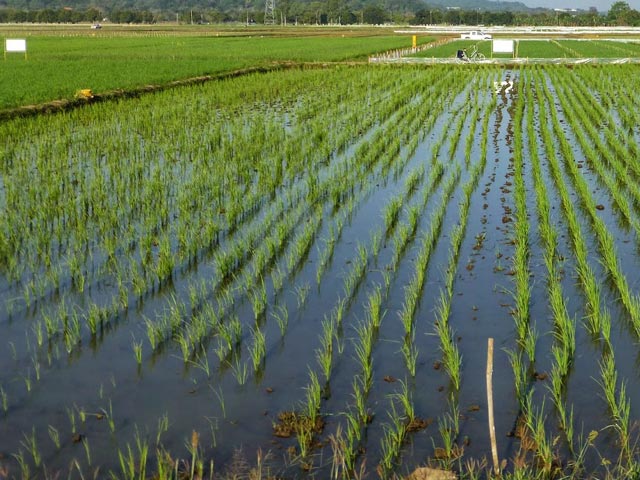Seed rate (Too low)
What it does
When seeding rate is too low, plants have low crop stand, low ground cover, and they experience greater weed pressure.
Why and where it occurs
Low seed rates can occur due to uneven distribution or insufficient seed used. Crops can be surface-broadcasted (wet or dry), drill-seeded (using machines) or broadcasted and incorporated when sown on dry fields.
Pre-germinated seed is typically used in wet direct seeding. When seeds are broadcast, fields can have patches of either too many or too few plants depending on the skills of the broadcaster and the soil conditions where the seed lands. Direct-seeded fields tend to have greater problems of lodging, especially when the seed is surface-sown. For good establishment, the fields have to have good water management and be more level.
How to identify
Check the field for the following:
- Insufficient plants and groundcover
- Seed rates are typically adequate between 40 to 100 kg per ha.
The number of seeds in each 10 cm x 10 cm square multiplied by the thousand grain weight equates to the estimated seed rate (kg per ha)
The pattern of damage is often uneven across the field.
Various problems affect crop establishment. These are cloddy soil, seed too deep, soil too soft at seeding, poor emergence in low spots in fields, heavy rainfall at seeding, soil crusting, poor seed quality, low seed rate, water stress, muddy water at seeding, clogged seeder and/or pests such as ants, birds, and rats that remove seed at planting.
To confirm cause of problem, check or ask a farmer about seed rate.
Why is it important
A good plant stand lays the foundation for good yields. The absence of a good stand automatically lowers yield potential. Economic costs can be direct in terms of yield lost due to a poor crop stand with too few plants.
How to manage
- For good establishment, manage water and ensure leveled water, allow water to settle
- Ensure an appropriate seed rate with even distribution of good quality seed (i.e., high germination and vigor)
- Crop stand should be of the order of 100 to 200 plants per m2, use seed rates between 40 to 100 kg per ha if other factors (e.g., pest problems and seedbed preparation) are not problematic
